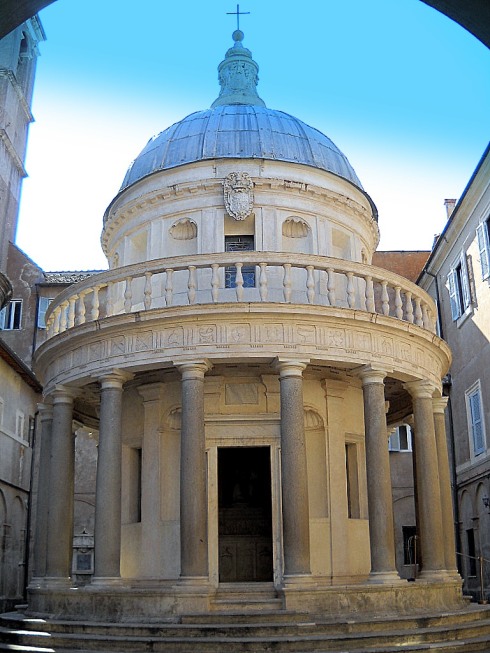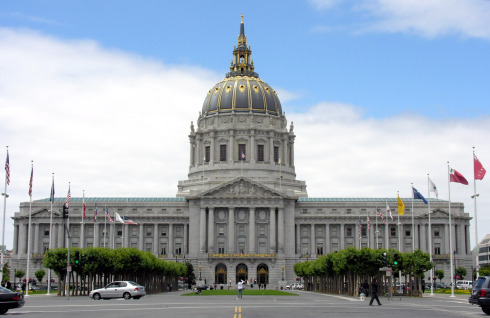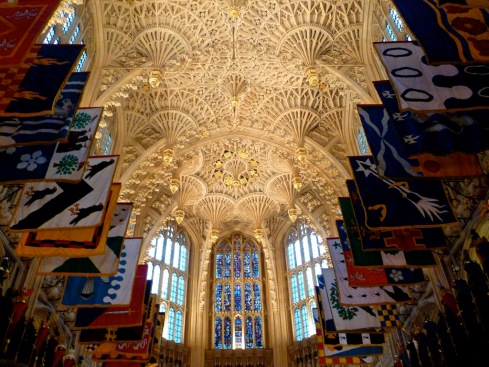
I have always had a bit of a struggle describing structures. For e.g. consider the Tempietto San Peitro in Italy above, one of the most harmonious structure of the Renaissance that has influenced the dome of St.Peter’s in the Vatican and the US Capitol. I would have described it as a set of circular stairs leading to a building surrounded by tall columns atop which is a balcony that surrounds a dome. And then there is Jonathan Glancey’s description of the same structure in his pictorially and literally beautiful and insightful book – The Story of Architecture:
The design of the Tempietto is of a stepped circular plinth leading up through a Doric colonnade and up through a balustrade to a delightful drum and dome.
A part of me wants to run around the city and point to every drum and dome structure and shout aloud – drum and dome, drum and dome! There are not many places I can think of here in SF, but there is one that I pass on my bicycle ride to work and it never gets old – the beautiful City Hall. A perfect drum and, wait for it…, dome!

I am partway way through Glancey’s book and one of its fascinating insights is into the language used to describe structures – ogee domes, barrel vaults, voussoirs, architraves, flying buttresses, among others. The buildings that it covers are there for a reason – they are representative of the times and style described and carry a bit of the history of those times. Yet, not all descriptions are effusive.
Consider the St.Peter’s Basilica in the Vatican, that I have seen and found to be awe-inspiring. Glancey feels differently:
..The result is an overblown confection that is too big, too rich, and ultimately indigestible. Many visitors find it all too much to take in and remember only the café on the roof – cappuccinos served by nuns – and the gift shop alongside with its kitsch souvenirs
I was unaware of this nun-run café; wish I had read this book earlier.
Here is Henry VII’s Private Chapel in Westminster, England, a late Gothic structure built 1503-19

Henry VII’s Chapel. Photo courtesy, Henry Lawford via Flickr https://www.flickr.com/photos/herry/5334767433
described thusly:
An exotic stone and glass casket, it was highly decorated outside as it was inside, rare for an English building of almost any period. The effect really is that of a jewel box, and it is hard to escape the feeling that no matter how a fine a building this is from a technical and craft point of view, it is a case of a style and a tradition being stretched to a point where it is in danger of tipping over into the realm of kitsch
In concluding his description of the Tempietto, with which we began this post, Glancey writes
Here at last – after many hundreds of years – one can enjoy the play of warm Italian sunlight through classical columns; here at last is a building that speaks of reason and civility rather than fear and religious domination
There is perhaps in the simplicity of things something that can be easily grasped and appreciated, compared to the most extensive, elaborate and intricate ones.
Glancey’s book is fun to read not only for the buildings it describes or as an introduction to the language of architecture, but also for his insightful and piquant commentary.

Leave a comment
Comments feed for this article